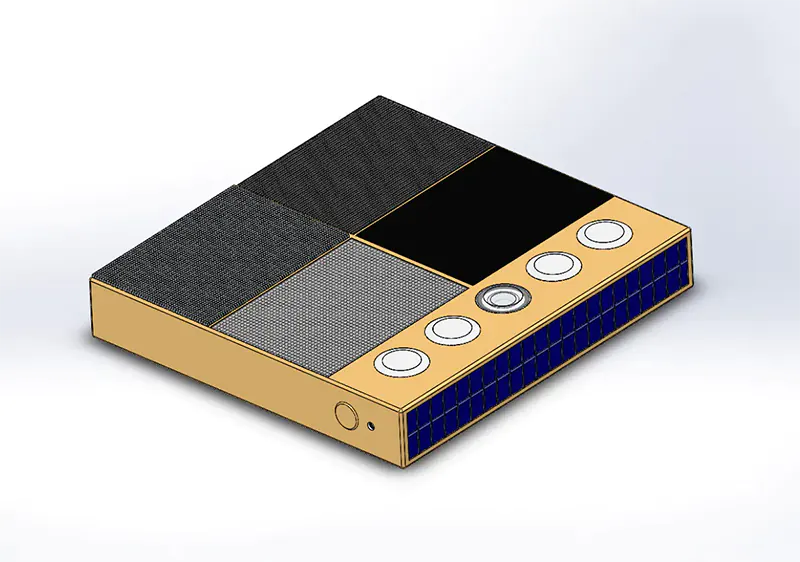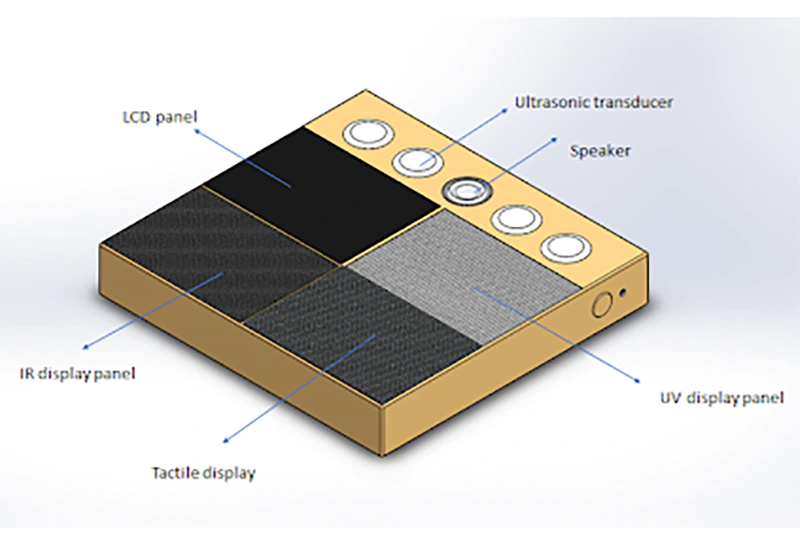

I have a Bachelor’s degree in Aerospace Engineering (Bangalore, India) and a Master’s in Astronautics and Space Engineering from Cranfield University, UK.
My research (MAILbox) was my master’s research project. There are new studies coming out every day in the field of space exploration and it has been my passion for quite some time. I hope to be part of the field and find answers to questions that we have just begun to ask.
My research in simple words is a payload design. It is a piece of technology that can be mounted over any satellite that we send into space. The idea originates from the Voyager Golden records or the Pioneer plaque. The records and the plate, designed by Frank Drake and Carl Sagan in the 70s, carried a message from humanity on board the Voyager and Pioneer satellites. They were meant to deliver this message to any alien civilization that came across them. The message depicted humanity as a peaceful and welcoming civilization reaching out to other civilizations out there.
Since then, there have been no new efforts made to send out a physical message. This largely is due to new studies showing how our communication efforts are misleading both from linguistic and sensory perspectives. If we consider the Voyager records, the inscription on the records was supposed to indicate the alien civilization how to build a record player and watch and listen to the contents of the records. However, these inscriptions have been found by linguists to be misleading and often confusing. Even for scientists on Earth, it was a tough time decoding the inscriptions. How would an alien civilization begin to understand our syntax and numbers, build a record player, and later begin to grasp the enormous amount of info in the disc? Even if we assumed that the record player was successfully built and played, the images, audio, and music on the record are filled with randomness.
This randomness originates due to a few oversights. One is it is set from the human perspective. For example, we are heterotrophs and there are images of people having food and water. An alien civilization that could be completely unaware of heterotrophic behavior would find this information confusing. Another example would be reproduction explained in the images. How does one explain a smaller human inside a larger human to an alien civilization that could have a completely different reproduction system? Evolutionary changes on Earth brought about the mammalian characteristics we see today. Evolution on another planet could be completely dissimilar to ours. This is the same with the audio message on the records. The large volume of human music could just be noise to an alien civilization.
The second oversight was the assumption of the ‘universality of mathematics and science’. In several cases, we have assumed a linear mathematical system for explaining images and concepts. This has been criticized largely over the years.
The third and probably the main oversight was the assumption that the alien civilization would have a similar sensory system to that of ours, to interpret the message. This again is an effect of evolution on Earth. An alien civilization without eyesight such as a species of mole would be unable to see the images.
These shortcomings called for a better means of message delivery that is inclusive of both linguistic and sensory abilities. This has never been easier than now with the growth of technology and the emergence of new fields of ‘astrolinguistics’ and ‘astrosociology’. This is when I came forth with an idea for multi-perceptual modalities message delivery module, which I named, MAILbox (Message All Intelligent Lifeforms).


MAILbox is an individual research project as part of my course at the Cranfield University, UK. When I started with it, all I considered was, with several new space grade technologies available, the concept would just require interfacing and implementation packed in a small sized module. The projects built a logical common ground between an inter-specie communication using modern understanding of astrolinguistics and astrosociology to design a message. The design of the message considers how it would be perceived by any species it might encounter, while not appearing intimidating, provocative or misleading about humanity and the Earth. The message is required to be interpreted in various modalities of information perception. The study, in its concept message, avoids all human semiotics, syntaxes, and language interpretations, and implements visual and audio cues interpreted in the different modalities defined in the project. MAILbox consists of three modalities for message delivery.
The visual modality consists of three display techniques, colour, infrared and ultraviolet. Humans can perceive their surroundings in the visual colour spectrum. However, this may not be same for an unknown alien civilisation. The study therefore argues that it is reasonable to consider examples of variation in visual perception in species on Earth for implementation of other visual modalities. For example, snakes see their surroundings in infrared and several species of owls, bats and rodents see in the ultraviolet spectrum. Therefore, the MAILbox implements an IR and UV display systems designed specifically for the module to deliver the message in these modalities. Similarly, the audio medium considers ‘hearing ranges’ in various species and therefore consists of a speaker and ultrasonic transducers to deliver the audio part of the message. And finally, a shape-shifting tactile display system is designed considering somatosensory modality to deliver the message by touch similar to braille.
The MAILbox is designed to be small and portable, and it can be easily mounted on any spacecraft. The 316 × 298 × 50 mm module weighs around 3 kilograms and is designed to sustain in the harsh space environments for long periods. The module remains in a hibernation mode throughout the mission to conserve power and is designed to activate only when touched or held by someone.
I presented my study at the UKSEDS Student Space Symposium 2020 and it has been accepted and due for publication in the upcoming Interstellar issue of Journal of British Interplanetary Society.
I plan to continue my work in the field of space engineering and take up my Ph.D. this year. Meanwhile, I am working on a couple of other projects for the Reinventing Space Conference and the IAASS Conference 2021.
I feel passion is the key driving factor for me. I am extremely interested in space engineering and that has often made work feel like a game. I am grateful for all the help from my professors, colleagues, friends, and people who provided great inputs to my project.
I usually have no specific morning routine. I am sometimes flooded with ideas for my projects, and I love to work on them. I often find myself in the zone and avoid taking breaks until I am completely done. Due to this, I am sometimes up late night or up early in the mornings.
A typical day looks like a lot of studying and searching, a couple of meetings with my teams discussing ideas and meeting agendas.
I use Slack, Discord, or Google Meet for daily communication and meetings. I also use various CAD design software and MATLAB for most of my work.
As a student from a space background there is news in various mainstream media and social media platforms. But I find the interesting papers and new research presented in various conferences and journals to particularly inspire me to pursue my work.
To comment on my personal life, I am vegan and love gaming once I am done with work. I enjoy oat milk and Verdansk equally.
I would say that it is important to believe in yourself, no matter how odd your idea might seem or how the odds are stacked against you. The peculiarity in one’s work often resonates with people and if done right, can lead to something amazing.
MAILbox publication on the Journal of the British Interplanetary Society






DISCLAIMER: ConductScience and affiliate products are NOT designed for human consumption, testing, or clinical utilization. They are designed for pre-clinical utilization only. Customers purchasing apparatus for the purposes of scientific research or veterinary care affirm adherence to applicable regulatory bodies for the country in which their research or care is conducted.